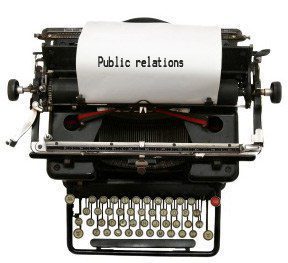I have been working with some PR teams recently and it is clear for me that the line between PR and Marketing is very grey. Whether PR is Public Relations or Press Relations, the definitions are increasingly muddled. Where does one stop and the other begin? No one has the same answer. This is an important isssue as it cuts to the chase of cross-functional operations in a company, and a very urgent need to learn how to collaborate together in real time. When a social media campaign gets some buzz, turns viral and then into an unfortunate “social media crisis“, this clearly involves all parties. Spurred on by a timely article by Vikki Chowney in New Media Age [now removed], where the UK’s Advertising Standards Authority (ASA) has reconsidered the scope of its remit to include zones that were previously much closer to PR, I thought I’d give some air to this topic.

Here are a few classic definitions of Marketing, Public Relations and Press Relations.
Marketing is about adding value to a product or service in an effort to sell. Publicity is one of the classic 4P’s, i.e. communication that is paid for.
Public Relations is communicating “with the purpose of creating a favorable public image.” (Wiktionary provides a suitably succinct and accurate description)
Press Relations includes “[t]he tasks of building, maintaining and exploiting good relationships between an organization and print and broadcast media organizations.” (Wiktionary)
Digital Media is all-inclusive
Starting with the customer’s perspective, one needs to evaluate the credibility and power of the source with which a customer interacts. Does the customer perceive the source as being more reliable? Is the source more convincing? The most powerful marketing tool has always been and remains ‘WORD OF MOUTH.’ The problem for most executives is that it is never ‘fast enough,’ so the need is to drive the message, typically using interruptive one-way communication, which has forever been the remit of marketing. But, as we know, the customer has become blasé, or worse, distrustful of the marketer’s message. For a [potential] customer to be convinced, the message needs to come from a trusted source.
This has always been the consideration behind editorial mentions in a magazine, whereby the third party [the ‘independent’ editor] has ‘endorsed’ a product. But, even the definition of a magazine has evolved. e-Mag’s or e-zines are cropping up like mushrooms. Self-published newspapers (e.g. paper.li) and blogs are akin to third party mentions.
The converging of Digital Marketing & Digital PR
Today, with the opportunities of the digital space and the immediately interactive and social nature of the Internet, it has never been easier to share your opinion. Marketers know that. Magazines know this. Advertising agencies know this. Public Relations agencies know this. It all is converging. And the unifying force is social media.
With everyone getting into the fray, isn’t it time that Marketing and PR (Public Relations and Press Relations) reconsider their roles and responsibilities, to rally together to make a more cogent and coherent plan? Does your organization do this?
If you have some great examples, please do share with us your thoughts and best practices!











This morning I had a talk with a PR agency about this. My feeling (which might be wrong) is that marketing 2.0 IS community management. Of course, the 4 P’s are still relevant but the question is how to integrate this community dimension in it.
This morning I had a talk with a PR agency about this. My feeling (which might be wrong) is that marketing 2.0 IS community management. Of course, the 4 P's are still relevant but the question is how to integrate this community dimension in it.
Managing community could be expressed as managing public relations in a broader sense?
In any event, when it comes to external communications, the need is to strike a balance/ intricate interplay between "marketing messages," interactive communication with the company and community management (with its own independent conversations) …